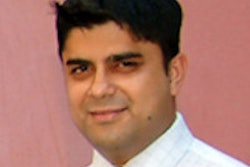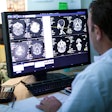The practice of radiology used to be pretty straightforward, with plain-film x-rays, angiograms, and barium studies making up the bulk of a radiologist's work. Having specialized radiology knowledge wasn't crucial to providing excellent patient care. But times have changed dramatically.
Now, the bulk of images a radiologist might deal with in a day includes CT, MR, and PET -- and the question of whether general radiology even has a place in the clinical care continuum has come under heated debate, according to Dr. Giles Boland, vice chair of radiology at Massachusetts General Hospital (MGH).
"Medical care has become increasingly complex, sophisticated, and time-dependent," Boland told AuntMinnie.com. "Stakeholders like the [U.S. Food and Drug Administration (FDA)] and others are saying that it doesn't make sense to have a general radiologist read images for a complicated surgery. And more and more, referring physicians are asking for subspecialty interpretation."
In a recent opinion, Carl Bialik of the Wall Street Journal described the controversy over utilizing median interpretation scores from multiple readers in seeking FDA clearance of a pharmaceutical to be used as part of a test for Alzheimer's. Some believe the results, which showed variability in image interpretation, make a case for specialization in medical imaging to boost diagnostic accuracy.
Specialists just get more practice, said Dr. Britt Anderson, a cognitive neuroscientist at the University of Waterloo, who was a member of the advisory panel the FDA consulted about the drug.
"It is better to have one person reading 500 scans a day than 500 people reading one a day," Anderson told Bialik.
But the idea that a specialist -- or anyone -- who reads lots of studies a day gets better experience isn't necessarily true, according to Dr. Richard Duszak, a radiologist with Mid-South Imaging and Therapeutics, a private practice in Memphis, TN.
"[Anderson's comment] suggests a detachment from reality," Duszak told AuntMinnie.com. "I would never go to a radiologist who was reading 500 studies a day. He's either going too fast or he's fatigued, and either way he's missing things. It has nothing to do with being a generalist or a specialist."
Where's the evidence?
With the increasing sophistication in imaging, perhaps it is harder for general radiologists to keep up with new devices, applications, and protocols -- much less to manage radiation dose, another hot-button issue. But is this really a problem? Yes, according to Boland.
"One might argue that addressing this intense level of imaging sophistication doesn't matter," he said. "Well, either the patient needs [advanced imaging] or not, and if there aren't specialists to interpret these exams, we're potentially denying a whole subset of patients a level of imaging they otherwise would need."
But general radiology practitioners argue that there isn't much clinical evidence to support the conclusion that subspecialty reads are better than general ones. In fact, in a study Boland co-authored that was published last year in European Radiology, researchers at MGH found that even subspecialists had 30% variability in their findings and recommendations -- similar to what has been found for general radiologists.
"General radiologists' counter argument might be that subspecialists can't get their house in order either," Boland said. "And of course, if overwhelming evidence that general radiology is inferior came out, there would be enormous infighting in the profession. But we have to ask who we're serving here -- the patients or the profession?"
The theory that specialists should have lower error rates than general radiologists just doesn't fly, according to Dr. Leonard Berlin, professor of radiology at Rush University Medical College.
"The idea that specialists would have lower error rates than general radiologists may be intuitive, but it's not factual," he said. "Even in the 1960s and 1970s, when researchers compared error rates between general radiologists and specialists, they didn't find a significant difference. And the reason is that most errors, say 70%, are perceptual."
Anyway, the bottom line is that it's impractical for everything to be read by a specialist, according to Duszak.
"In a perfect world, we all want the impeccable subspecialist to read our exams," he told AuntMinnie.com. "The problem is there's no such thing. If the threshold is so high that the only person who can read a CT scan in rural Mississippi is a world class academic neuroradiologist, and it's three hours by ambulance to the medical center -- that just puts patients in danger."
But that's where teleradiology can help, according to Boland.
"The profession itself believes that the days of the general radiologist are over," Boland said. "Except in those areas with small hospitals, where it makes no sense to have subspecialists. And that's where teleradiology can come in, although many sites resist it. No one wants to admit, 'OK, I don't have the expertise.' "
Finally, in the current litigious healthcare environment, is it also possible that general radiologists are exposed to more malpractice suits than their specialist counterparts? Not necessarily, according to Berlin: As with the error rates, what seems intuitive isn't necessarily based on data. In fact, earlier this year, Missouri Lawyers Media reported that a general radiologist who failed to find what turned out to be a fatal brain aneurysm actually won a malpractice suit filed by the family of the woman who died.
In any case, there's no doubt that radiology, like all of medicine, is swinging from the general to the specific, Berlin said.
"It's parallel to what's happening in general medicine," he said. "It's probably the way it's going to be. The general practitioner is a dying breed, and as medical people specialize, they want specialists in their imaging as well."




















